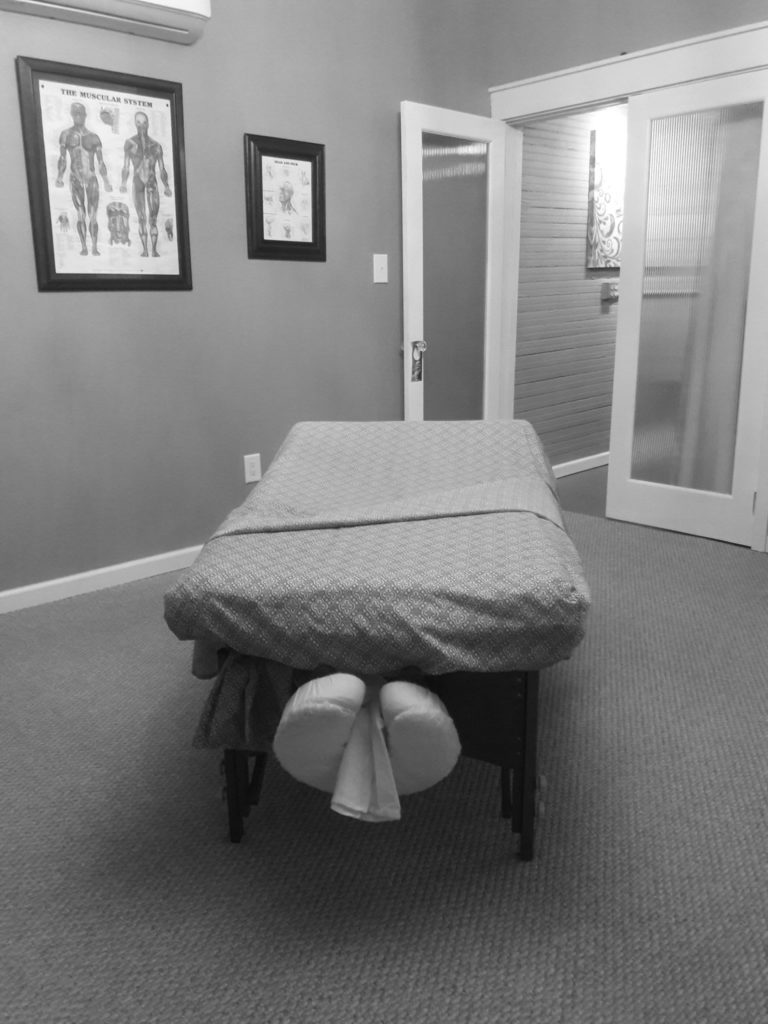“The great thing about massage therapy is there are so many options,” Kelly Merriman, a licensed massage therapist (LMT) explains. “From prenatal massage to sports massage to medical massage, you can do almost any of them. Or all of them. I didn’t choose just one, I do many types!”

The history
Massage therapy dates back to ancient China, where the medical benefits were strongly valued. Over the course of the next few hundred years, it spread west to Europe and that is where the Swedish Movement System was developed by Per Henril Ling in the early 1880s. The most common types of massage are:
- Swedish massage, which uses long strokes and kneading to help energize and relax.
- Deep massage, which targets deep layers of muscle to help with muscle damage.
- Sports massage, which helps prevent or treat injuries.
- Trigger point massage, which focuses on tight muscles that form after injury or overuse.
The allied health professions are seeing rapid growth, and are expected to grow to almost 20 million jobs by 2020. By offering opportunities for collaborative work, research and independent practices, these professions offer a full service medical experience. This career field includes positions in evaluation, prevention, nutrition and rehabilitation.
A little background
Inspired by her interest in helping people, Kelly has been a massage therapist for almost 20 years. Over the course of her career, she has discovered there are plenty of people who don’t know what massage therapy is. She makes it her mission to explain it to them, and emphasizes the benefits anyone can receive from it.
The Mayo Clinic reports that massage therapy has many benefits, ranging from stress management to reducing pain and muscle tension. Of course massage also provides the recipient with positive stimulation that often results in feelings of being cared for and comforted. Some other benefits include:
- Promoting better sleep.
- Tempering effects of dementia.
- Lowering blood pressure.
- Reducing chemotherapy-related nausea.
- Helping fibromyalgia pain.
- Improving balance in older adults.
The future of massage therapy is wide open, as it has only recently been incorporated into Western medicine. The last 50 years have seen a huge growth of the research and healing properties, and the momentum is continuing. Public demand for massage therapy shows just how much people think it is working.

Education options
Not all massage therapies are the same, which is one reason massage therapy requires a certification. Most massage therapists spend between two and seven years in school, completing a program that meets state or local requirements. The requirements vary by state, like most training, but most are recognized by a national accrediting organization and require a range of 500 to 1,000 hours in training.
Students study anatomy, ethics and business, pathology and the hands-on side of massage therapy. There are a series of tests by the regulating authority before a massage therapist can begin their practice. Some states do require a national certification, which is done through the National Certification Board for Therapeutic Massage and Bodywork (NCBTMB) which requires a national exam and at a minimum of 500 hours.
Staying current
For those considering this field, Kelly suggests learning as many different therapies as possible to help make sure you are a well-rounded therapist. “Get as much hands-on training and practice as you can,” she added. “Take as many continuing education classes starting early on, start as soon as you are licensed.”
As a member of both NCBTMP and Associated Bodywork & Massage Professionals (ABMP), Kelly stays up to date on information, educational opportunities and webinars. She also subscribes to Massage & Bodywork magazine, which helps her keep track of changes to the profession, as they publish articles on a wide variety of topics and modalities within the massage therapy field.
Kelly completed two years at community college and then followed it up with massage therapy school. As an LMT in the state of Florida and a Board Certified Therapist with the National Board, she’s able to teach continuing education classes to other massage therapist. “Not only do I do massage therapy, I’m able to teach it as well,” she said. Finding a way to share her experiences has really made her happy with this career field.
